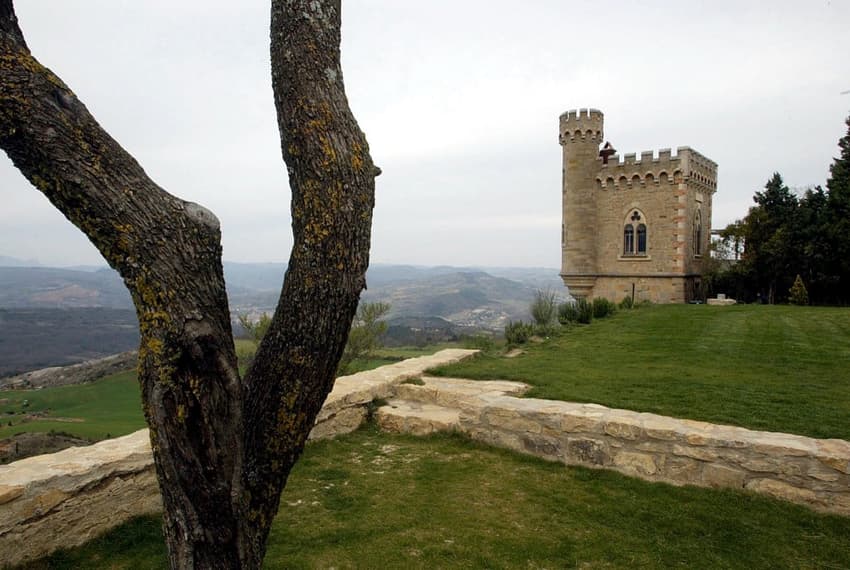This article is part of our August series on popular myths and misconceptions about French history.
French history myths: There is buried treasure in Rennes-le-Château

Legend has it that a penniless priest once stumbled upon gold hidden in the French countryside - a story that still inspires treasure-hunters.
Myth: A penniless priest in the small town of Rennes-le-Château, south west France, discovered treasure in the late 1800s. That treasure is still hidden somewhere in the countryside.
The story begins 1885 when Father Bérenger Saunière took over the parish of a small town in the Aude département, not far from Carcassonne, called Rennes-le-Château.
But the church, l'église Saint Mary Magdalene, that Saunière inherited was practically in ruins, so he set upon refurbishing the building - which surprised those around him who knew of his strained financial situation. According to legend, Saunière implied that he had discovered treasure and was using that to pay for the renovations. When he died, the location of the treasure supposedly died with him.
Fast forward to the years following World War II - a restauranteur and entrepeneur by the name of Noël Corbu acquired an estate in Rennes-le-Château, and along with it supposed archives from Saunière about how he had discovered the treasure of a former queen of France - Blanche of Castille (though some say it was the Treasure of the Cathars or the Knights Templar).
Corbu made it his mission to spread the story near and far, with the regional press reporting about the "priest with billions."
Visitors came from across France to learn about the legend and try to find the treasure hidden in Rennes-le-Château - and to eat in Corbu's restaurant and stay in his newly-opened hotel.
So how did the priest get the money for his expensive renovations? The answer, according to a 60 Minutes special by CBS News, was "good old fashioned fraud." The priest likely stole from donations and asked for payments for hundreds of Masses that he never actually performed.
The Da Vinci Code series is also responsible for bringing the small town back into public eye. One of Dan Brown's main characters is named Jacques Saunière, inspired by the priest. Brown supposedly visited the village and drew inspiration, as it had also been made famous in the book "Holy Blood, Holy Grail" that expanded on Corbu's claims of having found hidden, secret documents belonging to the priest.
The book asserts that those documents contained proof that Jesus married Mary Magdalene and that their child went on to become the Merovingian line (a dynasty of French kings).
Historians refute these claims too, and several excavations have been conducted at the church. Though they have never unearthed anything of substance, that has not stopped eager treasure hunters from digging holes and lugging their metal detectors to the small village, seeking the truth behind the legend.
Comments
See Also
Myth: A penniless priest in the small town of Rennes-le-Château, south west France, discovered treasure in the late 1800s. That treasure is still hidden somewhere in the countryside.
The story begins 1885 when Father Bérenger Saunière took over the parish of a small town in the Aude département, not far from Carcassonne, called Rennes-le-Château.
But the church, l'église Saint Mary Magdalene, that Saunière inherited was practically in ruins, so he set upon refurbishing the building - which surprised those around him who knew of his strained financial situation. According to legend, Saunière implied that he had discovered treasure and was using that to pay for the renovations. When he died, the location of the treasure supposedly died with him.
Fast forward to the years following World War II - a restauranteur and entrepeneur by the name of Noël Corbu acquired an estate in Rennes-le-Château, and along with it supposed archives from Saunière about how he had discovered the treasure of a former queen of France - Blanche of Castille (though some say it was the Treasure of the Cathars or the Knights Templar).
Corbu made it his mission to spread the story near and far, with the regional press reporting about the "priest with billions."
Visitors came from across France to learn about the legend and try to find the treasure hidden in Rennes-le-Château - and to eat in Corbu's restaurant and stay in his newly-opened hotel.
So how did the priest get the money for his expensive renovations? The answer, according to a 60 Minutes special by CBS News, was "good old fashioned fraud." The priest likely stole from donations and asked for payments for hundreds of Masses that he never actually performed.
The Da Vinci Code series is also responsible for bringing the small town back into public eye. One of Dan Brown's main characters is named Jacques Saunière, inspired by the priest. Brown supposedly visited the village and drew inspiration, as it had also been made famous in the book "Holy Blood, Holy Grail" that expanded on Corbu's claims of having found hidden, secret documents belonging to the priest.
The book asserts that those documents contained proof that Jesus married Mary Magdalene and that their child went on to become the Merovingian line (a dynasty of French kings).
Historians refute these claims too, and several excavations have been conducted at the church. Though they have never unearthed anything of substance, that has not stopped eager treasure hunters from digging holes and lugging their metal detectors to the small village, seeking the truth behind the legend.
Join the conversation in our comments section below. Share your own views and experience and if you have a question or suggestion for our journalists then email us at [email protected].
Please keep comments civil, constructive and on topic – and make sure to read our terms of use before getting involved.
Please log in here to leave a comment.